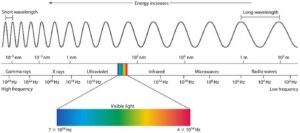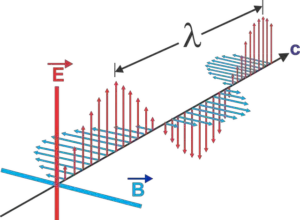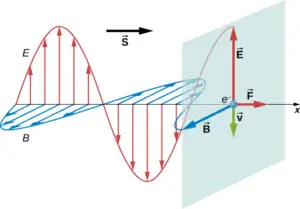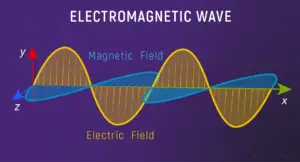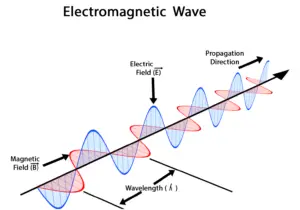Electromagnetic waves are everywhere around us, from the visible light that allows us to see the world around us, to the radio waves that transmit our favorite songs and podcasts. But have you ever stopped to wonder where these waves come from, and how they are generated?
The sources of electromagnetic waves are diverse and fascinating, ranging from the natural processes that produce cosmic radiation to the human-made technologies that enable us to communicate with each other across vast distances. Join me on a journey through the world of electromagnetic waves, as we explore the various sources that give rise to these essential and ubiquitous phenomena.
What are electromagnetic waves?
An electromagnetic wave is a type of energy that travels through space as a combination of electric and magnetic fields, oscillating at right angles to each other and to the direction of travel. These waves can vary in frequency and include familiar forms of radiation like radio waves, microwaves, infrared radiation, visible light, ultraviolet radiation, X-rays, and gamma rays. Electromagnetic waves are crucial for many aspects of modern technology, including communication, medicine, and energy production.
How are electromagnetic waves produced?
Electromagnetic waves are produced by the movement of charged particles, such as electrons, which create oscillating electric and magnetic fields that propagate through space. The motion of these charged particles can be either natural, as in the case of cosmic radiation and lightning, or human-made, as in the case of electronic devices and radio transmitters.
When an electric charge is accelerated, it produces an oscillating electric field that creates a corresponding oscillating magnetic field. Together, these fields form a self-propagating electromagnetic wave that travels through space at the speed of light. The frequency of the wave, or the number of oscillations per second, determines its energy and wavelength.
Electromagnetic waves can be produced by a variety of sources, including natural phenomena such as the sun and lightning, as well as human-made technologies such as radio transmitters, microwaves, and X-ray machines. Understanding the production and behavior of electromagnetic waves is essential to many fields, including physics, engineering, and communication technology.
Read Also:
- Maxwell’s equations class 12: integral form, differential form, applications, and explanation
- Displacement current class 12: definition, modification, formula, and properties
- Electromagnetic waves class 12: definition, equation, graphical representation, and applications
- Mathematical representation of electromagnetic waves, class 12
- Maxwell’s prediction of electromagnetic waves, class 12
What are the sources of electromagnetic waves, class 12?
Some sources of electromagnetic waves with their brief explanation are given below:
- Natural sources:
- Sun: Produces a wide range of electromagnetic waves, including visible light, ultraviolet rays, and X-rays.
- Lightning: The discharge of electrical energy during a thunderstorm creates electromagnetic waves, including radio waves and X-rays.
- Earth’s magnetic field: The movement of charged particles in the earth’s magnetic field produces electromagnetic waves, which can be detected by satellites and used for navigation.
- Cosmic radiation: High-energy particles from space can produce electromagnetic waves, including gamma rays and X-rays.
- Human-made sources:
- Radio transmitters: Used to send information over long distances, such as in radio and television broadcasts.
- Microwaves: Used for communication technology such as cell phones and satellite communication, as well as in microwave ovens.
- X-ray machines: Used in medical imaging to produce images of bones and internal organs.
- Lasers: Produce high-intensity, focused beams of electromagnetic waves, used in a variety of applications such as surgery, cutting, and welding.
Describe the sources of electromagnetic waves
Electromagnetic waves are generated by the movement of charged particles. When an electric charge is accelerated, it creates an oscillating electric field that generates a corresponding oscillating magnetic field. Together, these fields form a self-propagating wave that travels through space at the speed of light.
The sources of electromagnetic waves are diverse, including both natural phenomena and human-made technologies. Natural sources of electromagnetic waves include the sun, which produces a range of electromagnetic waves including visible light, ultraviolet rays, and X-rays. Lightning also produces electromagnetic waves, including radio waves and X-rays. Cosmic radiation from space can also generate electromagnetic waves.
Human-made sources of electromagnetic waves include radio transmitters, which are used to send information over long distances, such as in radio and television broadcasts. Microwaves are also used for communication technology, such as cell phones and satellite communication. X-ray machines are used in medical imaging to produce images of bones and internal organs. Lasers are another human-made source of electromagnetic waves, producing high-intensity, focused beams used in a variety of applications such as surgery, cutting, and welding.
Read Also:
- Transformer – Definition, Types, Working Principle, and Constructions
- LC oscillation class 12
- Expression for energy and average power stored in a pure capacitor
- Electromagnetic waves: definition, equation, graphical representation, and applications
What is the fundamental source of electromagnetic waves?
The fundamental source of electromagnetic waves is the movement of charged particles. When a charged particle accelerates or changes its velocity, it creates an oscillating electric field that generates a corresponding oscillating magnetic field. Together, these fields form an electromagnetic wave that propagates through space at the speed of light.
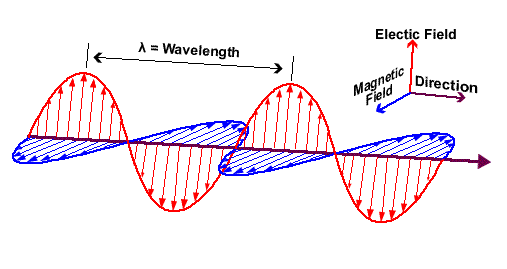
This phenomenon is described by Maxwell’s equations, which describe the behavior of electric and magnetic fields in space. These equations explain that the electric and magnetic fields are interdependent, and that any change in one field induces a change in the other, leading to the propagation of an electromagnetic wave.
Therefore, the movement of charged particles is the underlying source of all electromagnetic waves, whether they are produced by natural processes such as lightning and cosmic radiation, or by human-made technologies such as radio transmitters and X-ray machines.
The source of electromagnetic waves can be a charge
Yes, that’s correct! The source of electromagnetic waves can be a charged particle, such as an electron or a proton. When a charged particle is accelerated or changes direction, it creates a changing electric field, which in turn creates a changing magnetic field. These changing electric and magnetic fields form an electromagnetic wave that travels through space at the speed of light.

In fact, any time there is an accelerating charged particle, there will be an associated electromagnetic wave. This is why electromagnetic waves are so prevalent in the universe, as there are many sources of charged particles in both natural and human-made systems. Examples of charged particles that can produce electromagnetic waves include electrons moving through a wire, or the charged particles in a lightning bolt.
Frequently Asked Questions – FAQs
What are the 2 main sources of electromagnetic waves?
The two main sources of electromagnetic waves are natural processes and human-made technologies.
Natural processes: Electromagnetic waves are produced naturally by a variety of processes, including:
The sun: The sun is a powerful source of electromagnetic waves, including visible light, ultraviolet rays, and X-rays.
Lightning: When lightning strikes, it produces a burst of electromagnetic waves, including radio waves and X-rays.
Cosmic radiation: High-energy particles from space can create electromagnetic waves, including gamma rays and X-rays.
Human-made technologies: Electromagnetic waves are also produced by human-made technologies, including:
Radio transmitters: Used to send information over long distances, such as in radio and television broadcasts.
Microwaves: Used for communication technology such as cell phones and satellite communication, as well as in microwave ovens.
X-ray machines: Used in medical imaging to produce images of bones and internal organs.
Lasers: Produce high-intensity, focused beams of electromagnetic waves, used in a variety of applications such as surgery, cutting, and welding.
These two main sources of electromagnetic waves play a significant role in our daily lives and have revolutionized the way we communicate, diagnose medical conditions, and explore the universe.
What is the best source of electromagnetic waves?
Accelerating charged particles is the best source of electromagnetic waves.
What is our main source of electromagnetic energy?

Our Sun is a source of energy across the entire spectrum, and its electromagnetic radiation constantly bombards our atmosphere.
Is heat the source of electromagnetic waves?
Heat is not the source of electromagnetic waves, but rather electromagnetic waves can be a form of heat.
As we have discussed, electromagnetic waves are generated by the movement of charged particles. This movement can be caused by a variety of factors, including changes in electrical fields, acceleration of charged particles, or the movement of electrons in a wire.
Heat, on the other hand, is a form of energy that is transferred from one body to another as a result of a temperature difference. Heat can cause changes in the motion of charged particles, which in turn can produce electromagnetic waves. For example, when an object is heated, the molecules within it move faster, creating a changing electrical field that can generate electromagnetic waves.
Therefore, while heat is not the source of electromagnetic waves, it can be one of the factors that can cause the movement of charged particles and lead to the generation of electromagnetic waves.
What energy is in electromagnetic waves?
Electromagnetic waves carry energy in the form of electromagnetic radiation. This energy is carried by the oscillating electric and magnetic fields that make up the wave.
The energy carried by an electromagnetic wave is proportional to its frequency. Higher frequency waves, such as X-rays and gamma rays, carry more energy than lower frequency waves, such as radio waves and microwaves.
Stay tuned with Laws Of Nature for more useful and interesting content.


